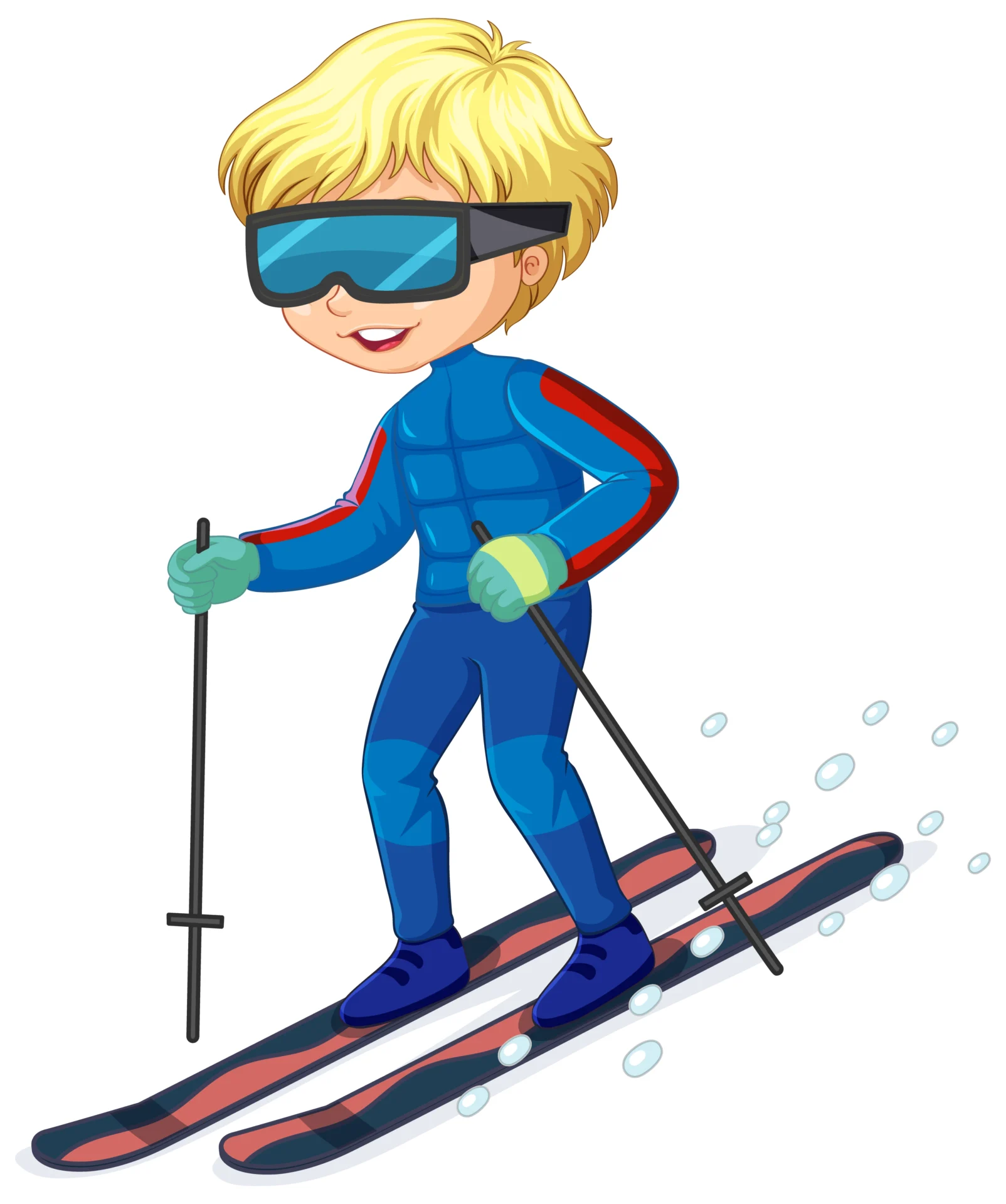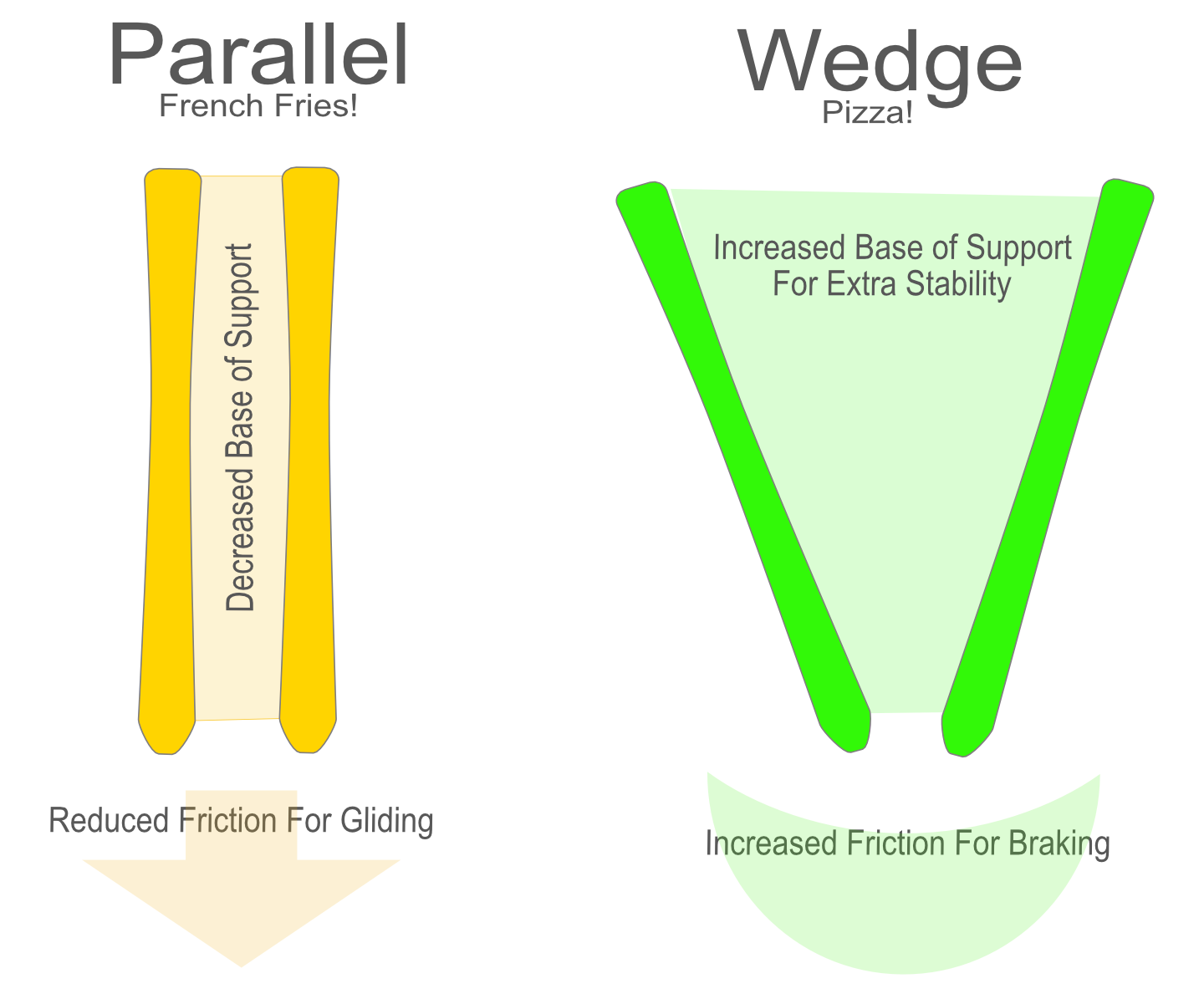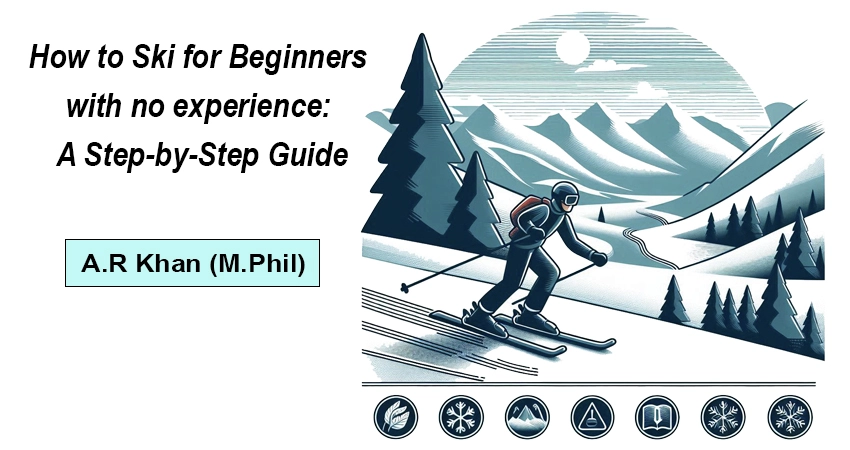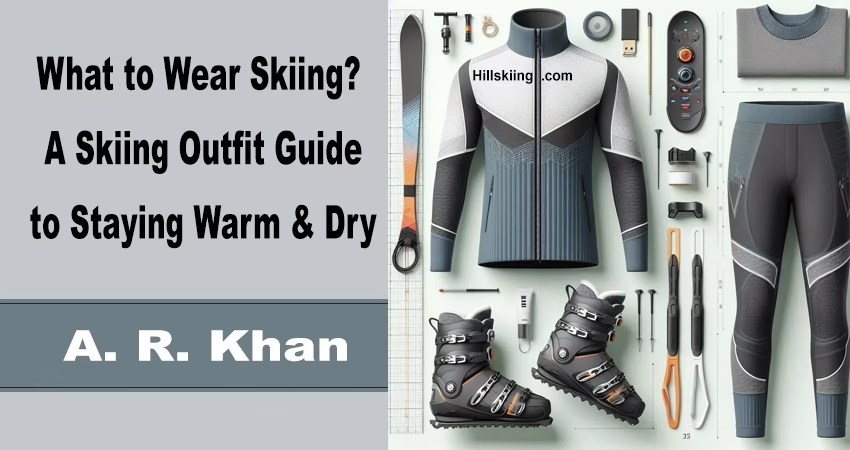Skiing is an exhilarating sport, but Ski for beginners, the fear of falling can be a major hurdle. The good news is that with the right techniques, preparation, and mindset, you can minimize falls and enjoy your time on the slopes. This guide will walk you through how to ski for beginners without falling, covering everything from mastering the basics to building confidence on the snow.
Skiing for the first time can feel overwhelming, but with the right approach, it’s an exhilarating and rewarding experience. Start by learning the basics of skiing before hitting the slopes. Begin on flat ground to get comfortable with your gear—practice putting on your skis, standing upright, and shuffling forward. Focus on maintaining a balanced stance with your knees slightly bent and your weight centered over your boots. This foundational step will help you feel more confident and stable when you move to steeper terrain. If you’re unsure where to start, consider taking beginner ski lessons at a local resort or hiring an instructor to guide you through the basics.
Once you’re ready to tackle the slopes, head to a green slope, which is specifically designed for beginners. These gentle slopes are perfect for practicing your first turns and stops. To turn, shift your weight slightly onto one ski while gently pressing the edge of the other ski into the snow. This will help you steer in the desired direction. To stop, point your skis inward in a “pizza” or wedge shape, which slows you down by increasing friction with the snow.
Remember, falling is part of the learning process, so don’t be discouraged if it happens. Learn how to fall safely by leaning to the side rather than backward, and practice how to get up after falling by positioning your skis perpendicular to the slope and using your poles for support.
Finally, make sure you’re dressed appropriately and have the right gear. What to wear skiing for the first time is crucial—layer up with moisture-wicking base layers, an insulating mid-layer, and a waterproof outer layer to stay warm and dry. Don’t forget gloves, a helmet, and goggles to protect yourself from the cold and sun.
Renting gear is a great option for beginners, as it allows you to try different equipment without a big investment. As you progress, focus on how to stop on skis for beginners and how to ski downhill for the first time by practicing controlled turns and stops. With patience and practice, you’ll soon be gliding down the slopes with confidence and enjoying the thrill of skiing!
How to Ski for Beginners without Falling
If you’re new to skiing, consider taking beginner ski lessons. An instructor can teach you essential skills like how to stop on skis for beginners and how to turn on skis for beginners, which are crucial for avoiding falls. They’ll also help you get comfortable with your gear, including how to use ski poles and adjust your bindings.
Before hitting the slopes, it’s essential to get comfortable with your equipment and learn the proper stance. Begin by practicing on flat ground or a beginner-friendly green slope. Put on your skis and boots, and focus on maintaining a balanced posture. Keep your knees slightly bent, your weight centered over your boots, and your arms forward for stability. This stance helps you stay in control and reduces the risk of losing your balance.
Start with the Basics: Gear and Stance
When you’re learning how to ski for beginners without falling? the foundation lies in understanding your gear and mastering the proper stance. Skiing is as much about balance and control as it is about technique, and getting these basics right will set you up for success on the slopes. Here’s a detailed breakdown of what you need to know:
Getting the Right Gear
Before you even step onto the snow, it’s essential to have the right equipment. Here’s what you’ll need:
Skis: For beginners, shorter skis are easier to control. Rent skis designed for beginners, as they are more forgiving and help you learn faster.
Boots: Ski boots should fit snugly but not be too tight. They are your primary connection to your skis, so comfort and support are key.

Poles: Ski poles help with balance and timing. As a beginner, you may not use them much at first, but they’re good to have as you progress.
Helmet: Safety first! A properly fitted helmet is non-negotiable to protect your head from falls or collisions.
Goggles: These protect your eyes from wind, snow, and UV rays. Choose goggles with anti-fog features for clear vision.
Clothing: Dress in layers to stay warm and dry. Start with a moisture-wicking base layer, add an insulating mid-layer, and finish with a waterproof outer layer. Don’t forget gloves and a neck gaiter or scarf.
If you’re new to skiing, renting gear is a great option. Most ski resorts offer rental packages that include skis, boots, and poles. This allows you to try different equipment without committing to a purchase.
Mastering the Proper Stance
Your stance is the foundation of your skiing technique. A good stance helps you maintain balance, control your movements, and reduce the risk of falling. Here’s how to get it right:
Feet Shoulder-Width Apart: Stand with your feet about shoulder-width apart. This provides a stable base and helps you stay balanced.
Bend Your Knees: Keep your knees slightly bent and flexible. This acts as a shock absorber and helps you respond to changes in terrain.
Weight Centered: Distribute your weight evenly over both skis. Avoid leaning too far forward or backward, as this can cause you to lose balance.
Arms Forward: Hold your arms slightly forward and out to the sides, like you’re carrying a tray. This helps with balance and prepares you to use your poles.
Look Ahead: Focus your gaze downhill, not at your skis. Looking ahead helps you anticipate turns and obstacles, keeping you in control.
Practice on Flat Ground
Before heading to the slopes, spend some time on flat ground to get comfortable with your gear. Practice walking in your skis, shuffling forward, and turning in place. This will help you get a feel for how your skis move and how your body responds.
Walking in Skis: Lift one foot at a time and take small steps. This helps you get used to the weight and length of your skis.
Turning in Place: Practice turning your skis by pivoting your feet. This is a useful skill for navigating tight spaces or adjusting your direction.
Take a Beginner Ski Lesson
If you’re new to skiing, taking a beginner ski lesson is one of the best investments you can make. A professional instructor will teach you the basics and terms, including how to put on your skis, how to stop, and how to turn. They’ll also help you correct any mistakes in your stance or technique before they become habits.
Lessons are especially helpful for learning how to stop on skis for beginners and how to turn on skis for beginners. These skills are essential for avoiding falls and staying in control on the slopes.
Build Confidence Gradually
Once you’re comfortable with your gear and stance, start on a beginner-friendly green slope. These gentle slopes are designed for first-time skiers and provide a safe environment to practice. Focus on maintaining your stance, controlling your speed, and making small turns.
Remember, skiing is a skill that takes time to develop. Don’t rush to steeper slopes before you’re ready. Progress at your own pace, and celebrate small victories along the way.
By starting with the basics—getting the right gear, mastering your stance, and practicing on flat ground—you’ll build a strong foundation for skiing. This will not only help you avoid falls but also make your time on the slopes more enjoyable and rewarding. With patience and practice, you’ll soon be gliding down the mountain with confidence!
Master the Pizza (Wedge) Technique
The “pizza” or wedge technique is one of the most fundamental skills for beginner skiers. It’s the foundation for controlling your speed, stopping, and making turns, all of which are essential for skiing without falling. This technique gets its name from the shape your skis make—a wedge or “pizza slice”—when the tips are close together and the tails are apart. Here’s a detailed breakdown of how to master this technique:

What is the Pizza (Wedge) Technique?
The pizza technique involves positioning your skis in a V-shape, with the tips of the skis close together and the tails farther apart. This creates friction with the snow, which slows you down or brings you to a complete stop. It’s the go-to method for beginners to control their speed and build confidence on the slopes.
How to Get into the Pizza Position
Start on Flat Ground: Begin on a flat or very gentle slope to practice the wedge position without moving.
Position Your Skis: Point the tips of your skis together so they’re almost touching, and push the tails apart to form a V-shape.
Bend Your Knees: Keep your knees slightly bent and your weight centered over both skis. This helps you stay balanced and in control.
Keep Your Upper Body Stable: Hold your arms slightly forward and out to the sides for balance. Avoid leaning too far forward or backward.
Using the Pizza to Control Speed
Once you’re comfortable with the wedge position, it’s time to use it to control your speed on a gentle slope. Here’s how:
Start Moving: Begin on a slight incline and let gravity pull you forward.
Form the Wedge: As you start moving, push the tails of your skis apart to form the pizza shape. The wider the wedge, the more friction you create, and the slower you’ll go.
Adjust the Wedge: To slow down further, widen the wedge by pushing your heels out more. To speed up slightly, bring the tails of your skis closer together.
Stay Balanced: Keep your weight evenly distributed over both skis and your knees bent. Avoid leaning back, as this can cause you to lose control.
Using the Pizza to Stop
Stopping is one of the most important skills for skiing without falling. The pizza technique makes it easy to come to a controlled stop. Here’s how:
Form a Wide Wedge: As you’re moving, push the tails of your skis far apart to create a wide pizza shape.
Apply Pressure: Press the inside edges of your skis into the snow. This increases friction and slows you down.
Come to a Complete Stop: Keep widening the wedge and applying pressure until you stop completely.
Turning with the Pizza Technique
Once you’re comfortable controlling your speed and stopping, you can start practicing turns using the pizza technique. Here’s how:
Start in a Wedge: Begin moving in the pizza position.
Shift Your Weight: To turn left, shift your weight slightly onto your right ski. To turn right, shift your weight onto your left ski.
Steer with Your Feet: Use your feet to guide the skis in the direction you want to go. For example, to turn left, gently push your right ski forward while keeping your left ski steady.
Maintain the Wedge: Keep your skis in the pizza shape throughout the turn to control your speed.
Common Mistakes to Avoid
Leaning Back: This can cause you to lose control and fall. Keep your weight centered over your skis.
Narrow Wedge: If your skis are too close together, you won’t create enough friction to slow down or stop. Widen the wedge for better control.
Stiff Legs: Keep your knees bent and flexible to absorb bumps and maintain balance.
Practice Tips
Start Small: Practice on a gentle slope before moving to steeper terrain.
Use a Magic Carpet or Beginner Lift: These are designed for beginners and provide easy access to gentle slopes.
Take a Lesson: A ski instructor can provide personalized feedback and help you perfect your technique.
Why the Pizza Technique is Important?
The pizza technique is the foundation of skiing for beginners. It teaches you how to control your speed, stop safely, and make basic turns—all of which are essential for skiing without falling. Once you’ve mastered this technique, you’ll have the confidence and skills to progress to more advanced maneuvers, like parallel skiing and carving.
By mastering the pizza (wedge) technique, you’ll build the skills and confidence needed to enjoy skiing while minimizing falls. Practice regularly, stay patient, and remember that every skier starts with the basics. With time and effort, you’ll be gliding down the slopes with ease!
Learn How to Fall Safely (and Get Back Up)
Even with the best techniques, falls can happen—especially when you’re just starting out. Learning how to fall safely is an important part of skiing. If you feel yourself losing balance, try to lean to the side rather than backward. Falling backward can lead to injury, while falling to the side is less risky.
Once you’ve fallen, it’s important to know how to get up after falling. Position your skis perpendicular to the slope, use your poles for support, and push yourself up gradually. If you’re on a steep slope, consider removing your skis to stand up safely before putting them back on.
Falling is an inevitable part of learning to ski, especially for beginners. However, knowing how to fall safely and how to get up after falling can make the experience less intimidating and help you avoid injuries. By mastering these skills, you’ll build confidence and be able to recover quickly, allowing you to focus on improving your technique. Here’s a detailed guide to falling safely and getting back on your feet:
Why Learning to Fall Safely is Important
Falling while skiing is not a sign of failure—it’s a natural part of the learning process. However, falling incorrectly can lead to injuries, such as sprains, bruises, or even more serious issues. Learning how to fall safely minimizes the risk of injury and helps you stay calm and in control. Additionally, knowing how to get up after falling? ensures you can quickly resume skiing without feeling frustrated or discouraged.
How to Fall Safely
When you feel yourself losing balance, follow these steps to fall safely:
Stay Relaxed: Tensing up can make the fall worse. Try to stay loose and go with the motion.
Lean to the Side: If you’re falling, aim to fall to the side rather than backward or forward. Falling backward can cause you to hit your head or strain your back, while falling forward can lead to wrist injuries.
Protect Your Head: Keep your head up and avoid hitting it on the ground. If you’re wearing a helmet (which you should be!), it will provide additional protection.
Tuck Your Arms In: Avoid sticking your arms out to break your fall, as this can lead to wrist or shoulder injuries. Instead, keep your arms close to your body.
Let Go of Your Poles: If you’re holding ski poles, let them go as you fall to avoid injuring yourself or others.
How to Get Up After Falling
Once you’ve fallen, the next step is to get back up safely and efficiently. Here’s how:
- Position Your Skis:
– If you’re on a gentle slope, position your skis perpendicular to the slope (across the hill) to prevent sliding.
– If you’re on a steeper slope, you may need to remove your skis to stand up safely. To do this, press the binding release lever with your pole or hand.
- Gather Your Equipment:
– If your skis came off, place them perpendicular to the slope and step back into them.
– Make sure your poles are within reach.
- Use Your Poles for Support:
– Plant your poles firmly in the snow on the uphill side of your body.
– Use them to push yourself up while keeping your weight centered over your skis.
- Stand Up Gradually:
– Bend your knees and bring your feet underneath your body.
– Push yourself up using your legs and poles, avoiding sudden movements.
- Check Your Gear:
– Once you’re standing, make sure your skis, boots, and bindings are secure.
– Adjust your clothing and goggles if needed.
Tips for Falling and Getting Up
Practice Falling: On a flat or gentle slope, practice falling and getting up to build muscle memory. This will make it easier to recover during an actual fall.
Stay Calm: Falling can be frustrating, but staying calm will help you recover faster and avoid mistakes.
Ask for Help: If you’re struggling to get up, don’t hesitate to ask for assistance from a fellow skier or instructor.
Common Mistakes to Avoid
Falling Backward: This can lead to head or back injuries. Always try to fall to the side.
Using Your Arms to Break the Fall: This can cause wrist or shoulder injuries. Keep your arms tucked in.
Rushing to Stand Up: Take your time to ensure your skis are properly positioned and your gear is secure before getting up.
Building Confidence After a Fall
Falling can shake your confidence, but it’s important to remember that every skier falls—even professionals. Here’s how to bounce back:
Take a Deep Breath: Pause for a moment to collect yourself before getting back up.
Analyze What Happened: Think about why you fell and what you can do differently next time.
Start Small: If you’re feeling nervous, return to a gentler slope to rebuild your confidence.
Why Learning to Fall is Part of Skiing
Falling is not just a beginner’s challenge—it’s a skill that even advanced skiers use to stay safe. By learning how to fall safely and how to get up after falling, you’ll become a more resilient and confident skier. Over time, you’ll fall less often, but knowing how to handle falls will always be an essential part of your skiing toolkit.
By mastering the art of falling safely and getting back up, you’ll reduce the risk of injury, recover quickly, and stay focused on improving your skills. Remember, every fall is a learning opportunity, and with practice, you’ll soon be skiing with confidence and ease!
Build Confidence Gradually
Confidence is key to skiing without falling. Start on gentle slopes and progress to steeper terrain only when you feel ready. Avoid comparing yourself to others—everyone learns at their own pace. Focus on skiing basics for beginners, such as looking ahead (not down at your skis) and keeping your movements smooth and controlled.
Practice regularly to build muscle memory and improve your balance. Off-season exercises like squats, lunges, and core workouts can also help you stay strong and stable on the slopes.
Dress for Success and Stay Safe
Proper gear can make a big difference in your skiing experience. Dress in layers to stay warm and dry, and don’t forget essentials like a helmet, gloves, and goggles. If you’re renting equipment, make sure your skis, boots, and bindings are properly fitted. Ill-fitting gear can increase the risk of falls and injuries.
Stay Relaxed and Have Fun
Finally, remember that skiing is supposed to be fun! Don’t let the fear of falling hold you back. Stay relaxed, take breaks when needed, and celebrate your progress. With patience, practice, and the right techniques, you’ll soon be gliding down the slopes with confidence and enjoying the thrill of skiing without the fear of falling.
By following these steps and focusing on how to ski for beginners without falling? you’ll build the skills and confidence needed to enjoy this incredible sport. Whether you’re practicing on a green slope or tackling your first turn, remember that every skier starts as a beginner—so embrace the journey and have fun!
FAQs: How to Ski for Beginners without Falling
Is skiing hard for beginners?
Skiing can feel challenging at first, but with the right techniques and practice, it becomes easier. Starting on beginner slopes, taking lessons, and mastering the basics (like the pizza technique) will help you build confidence quickly.
How do I stop on skis as a beginner?
The easiest way to stop as a beginner is by using the pizza (wedge) technique. Point the tips of your skis together and push the tails apart to create a V-shape. This increases friction with the snow and slows you down or brings you to a complete stop.
What should I wear for my first day skiing?
Dress in layers to stay warm and dry:
– A moisture-wicking base layer
– An insulating mid-layer (like a fleece)
– A waterproof outer layer (ski jacket and pants)
Don’t forget gloves, a helmet, goggles, and warm socks.
How do I avoid falling while skiing?
To avoid falling:
– Maintain a proper stance (knees bent, weight centered).
– Use the pizza technique to control your speed.
– Look ahead, not down at your skis.
– Start on gentle slopes and progress gradually.
What’s the best way to control my speed as a beginner?
The pizza (wedge) technique is the best way to control your speed as a beginner. Widen the wedge to slow down and bring the skis closer together to speed up slightly.
What gear do I need as a beginner skier?
Essential gear includes:
– Skis, boots, and poles (rentable at most resorts)
– A helmet, goggles, and gloves
– Warm, waterproof clothing in layers






Trackbacks/Pingbacks